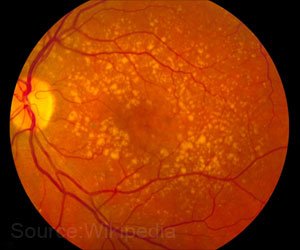New Way to Prevent Common Causes of Vision Loss

“Our study has opened up the possibility of mitigating aberrant blood vessel growth in eye diseases by targeting the epigenetic machinery,” said Ambati, the founding director of UVA’s Center for Advanced Vision Science and a member of the University of Virginia School of Medicine’s Department of Ophthalmology. “Through local targeting of the epigenetic regulator, we have gained a deeper understanding of how ocular immune cells can cause a loss of control over blood vessel growth under the retina. This approach also offers a new direction for the development of more effective, cost-efficient and accessible interventions, thereby avoiding issues such as drug resistance, which is a growing concern with conventional anti-VEGF therapies used in clinical treatments.”
Scientists have known that abnormal vessel overgrowth in the eye is fueled by excessive amounts of a substance called “vascular endothelial growth factor-A,” or VEGF, that plays an important role in blood vessel formation. There are now treatments available that target VEGF to prevent vessel overgrowth, and they often provide dramatic benefits at first. Unfortunately, these benefits can fade with time. That leaves doctors in need of better treatments to help preserve patients’ eyesight.
Ambati and Wang’s new research identifies a key protein that determines VEGF levels. Blocking this protein in lab mice reduced their VEGF levels significantly, and it did so in a targeted way, without unwanted side effects. The scientists noted, for example, that they observed no toxic effects on the retina, the light-sensing portion of the eye where the vessel overgrowth occurs. “This fat mass and obesity-associated (FTO) protein was previously shown to be correlated with obesity in humans. Unexpectedly, we found it also play important roles in regulating ocular neovascularization through an epigenetic mechanism,” Ambati said. “This exciting discovery finally answers a longstanding question about how ocular immune cells, such as macrophages, contribute to abnormal blood vessel growth under the retina. This question was first investigated by our team 20 years ago, and we’re thrilled to have found an answer.”
Advertisement
In addition to identifying a promising target for the development of new treatments for vision loss, the discovery sheds important light on the fundamental mechanisms responsible for the blood vessel overgrowth that robs millions of people of their sight. Neurovascular age-related macular degeneration alone affects more than 200 million people worldwide. While much more research and testing will be needed before the new finding could be translated into a treatment, the UVA scientists are excited about the potential of the discovery.
“We are hopeful that our study will pave the way for the development of new treatments, ultimately reducing the burden of neovascular-related illnesses.”
Source: Eurekalert
Source link
#Prevent #Common #Vision #Loss



